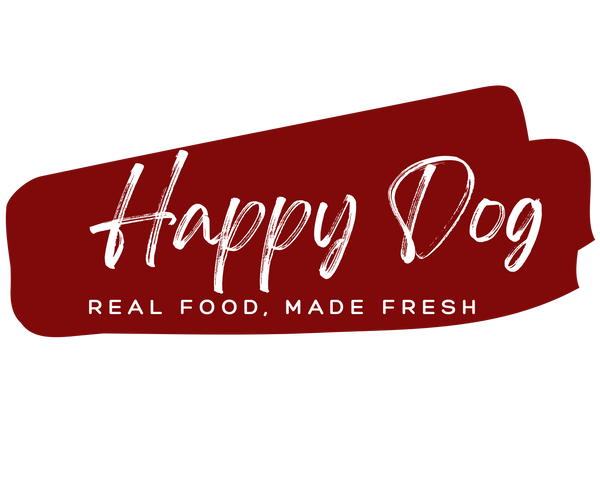
Garlic in dog food
One of the most frequent questions we get here at Happy Dog is about Garlic (Allium Sativum). Many of you have heard or read that garlic is toxic to dogs and wonder why we include it in our base mix diet. I wish to address this concern and eliminate the fear of including garlic in your canine friend's diet.
Garlic is a member of the Allium family, along with onions. The toxic chemical contained in garlic and onions is thiosulphate. Dogs should NEVER be fed onions. But, this chemical only exists in minute amounts in garlic. Ingestion of large doses of this chemical can cause hemolytic anemia in dogs, destroying red blood cells. A large dose would be ingested if, for instance, you are in the middle of making dinner and you walk away from the kitchen counter to answer the phone, leaving a whole bulb of garlic within easy reach for your dog who proceeds to devour the entire thing.
However, in small amounts, garlic offers many health benefits for both humans and dogs. Some of them are as follows:
- Garlic helps to eliminate worms, strengthens digestion and stimulates the intestinal tract (in a good way) and generally supports intestinal health. In this way, it can be a good choice for dogs making the transition to a fresh, raw diet.
- It is good for animals that are being fed a high-meat or fish diet, overweight dogs and those that suffer from hip pain, arthritis or dysplasia.
- Garlic is also a potent anti-fungal agent and can be used topically for fungal skin infections.
- For helping to clear up cases of hay fever, seasonal allergies, kennel cough or other respiratory ailments, Garlic is useful due to its action as a strong expectorant, helping to clear the lungs and kill bacteria.
- Garlic is naturally anti-bacterial and can be supplemented to help treat any condition caused by bacteria, internally or externally.
- In studies, garlic has been shown to reduce blood-sugar levels in diabetic dogs and humans.
- One of garlic’s most publicized benefits is its ability to lower blood cholesterol and improve circulation.
- Garlic supports the production of white blood cells, strengthening your dog’s resistance to infections of all kinds.
The Whole Dog Journal, recommends garlic as a good addition to any raw diet. Their advice is that you can safely feed 1 clove of garlic for every 20 lbs of body weight. Another source describes an average daily intake of garlic as 1 clove per day for a medium-large dog. Yet another source claims that you would need to feed your dog as much as two whole bulbs a day for an extended period to make your dog sick. At www.Sojos.com, they claim that it would take as much as 50 cloves of garlic in one sitting to cause toxic effects in your dog. Keep in mind that people have been feeding their dogs garlic safely for thousands of years and that many healthy pet foods and treats contain garlic in small, safe amounts. It is simply a matter of very high doses and a large quantity relative to the size of your dog.
Dr. Pitcairn recommends the following amounts be given to your dog if feeding a raw diet and if indicated. Cats can have 1/4 clove per day.
10-15lbs = 1/2 clove of garlic
20-40lbs = 1 clove
45-70lbs = 2 cloves
75-90lbs = 2 1/2 cloves
100lbs+ = 3 cloves
***Resource: www.preciouspets.org, Dr. Pitcairn’s Complete Guide to Natural Health for Dogs and Cats, The Lang Institute for Canine Massage: Course Manual, The Whole Dog Journal, Alternative Medicine for Pets, www.Sojos.com.
